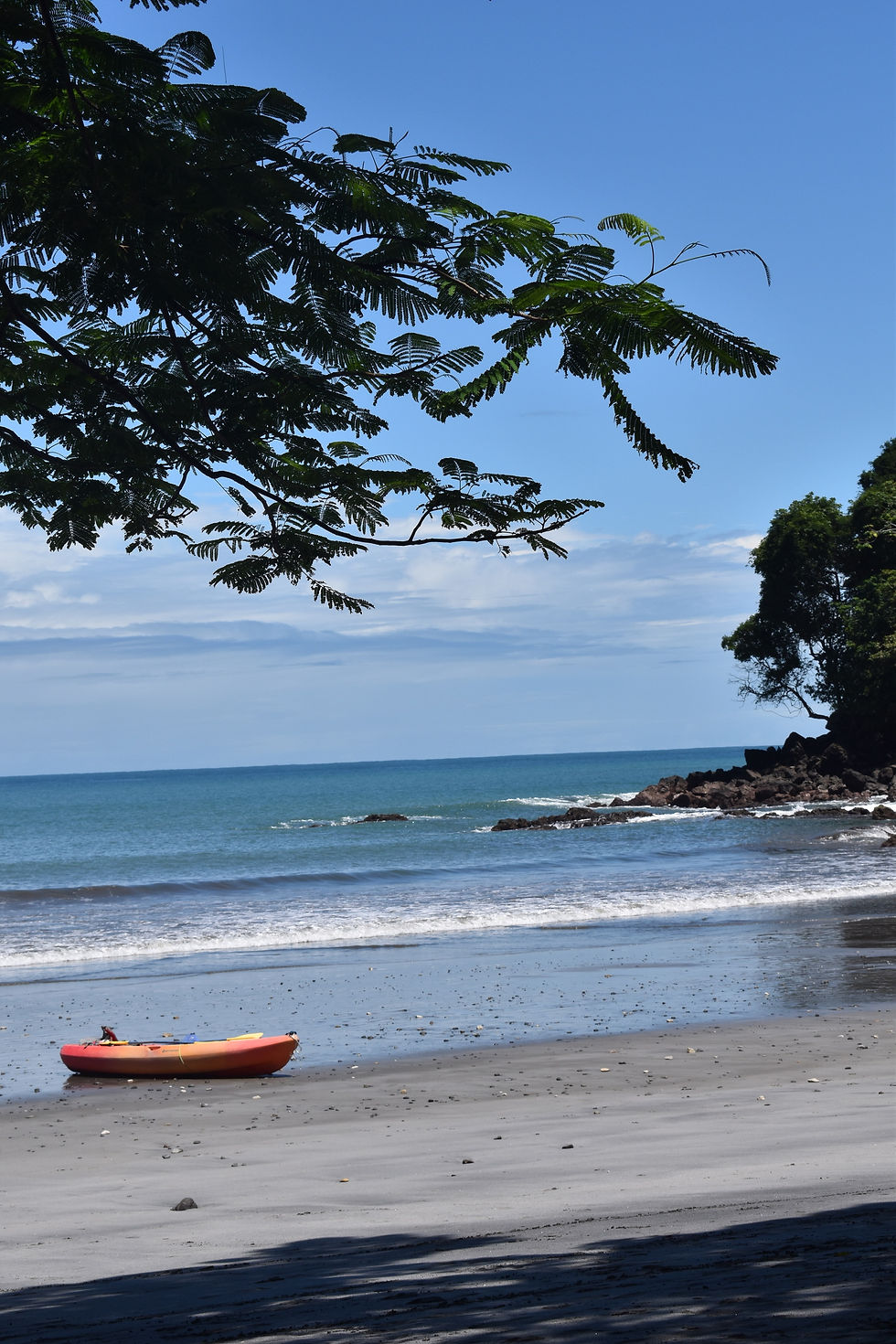How To Safely Navigate the Open Waters
- alexpombo10
- Nov 14, 2024
- 4 min read
Updated: Feb 18

Tropical beaches are a popular vacation destination for many people because of their magical environment. However, many beaches are incredibly deadly. From vicious sharks to poisonous water snakes, the open waters pose a danger to humans if you don’t know how to safely navigate the risks. Rip currents claim 10 times more lives per year than sharks or water snakes, according to Keith Randall from Texas A&M Marketing and Communications Department. Within the United States alone, around “100 people drown from rip currents along U.S beaches each year,” says Cara Korte, a CBS News Climate and Energy Reporter. Rip currents can happen at any time, and it is important to know how to escape one.
What is the difference between a rip tide and a rip current?
Unknown to many people, there is actually a difference between a rip tide and a rip current. Rip currents are the more frequent of the two, but people mistake this for a rip tide since the name of it sounds more powerful. While both are dangerous, the difference in how they form means there will be a difference in how you escape each one. Rip tides are formed when there is an outgoing tide. Outgoing tides pull “fast moving currents of water from an inlet with a barrier beach out to sea,” says Meteorologist Ferdinand Furer. While swimmers only run into rip tides occasionally, it is important for them to research the tides of the beach they will be visiting so they can be prepared.
Rip currents are far more dangerous because of their frequency. Ferdinand Furer continues to say that this happens “when breaking waves rush up the beach, water seeks to balance itself so it rushes back into the surfline.” This occurrence brings people hundreds of thousands of yards away from the shore without realizing it. Usually, rip currents happen when there is a break in a sandbar because that creates a channel for water to rush back out to sea in a straight direction.
How to identify a rip tide or a rip current
Even though rip currents happen frequently, it can be rather difficult to catch on to the signs. Believe it or not, the area of water as a wave breaks, described as whitewater, is a good indication for a safe beach. When you see one spot of water where water should be breaking, but it is not, that is a possible sign for a rip current. Other smaller signs are a difference in the color of the water, a line of foam, seaweed, or debris, or choppy water The United States Lifesaving Association is a great resource to keep you informative about what to look for.
What to do if you find yourself trapped in a rip tide/current
The first thing you should NOT do, is panic. “Panicked swimmers often try to counter a rip current by swimming straight to shore,” according to the National Oceanic and Atmospheric Administration. This can make you tired and it increases the chance of drowning, because swimmers won’t actually move closer to the shore. Instead, swim parallel to the shore, moving at a slight angle until you hit the beach. Lastly, always swim in an area with a lifeguard near so you can scream for help if you need to.
After researching through multiple websites, I have determined these as some of the most dangerous beaches due to rip tide currents:
Playa Zipolite, Mexico
Playa Zipolite, a beach on Mexico’s Pacific coast in Oaxaca, is known for being one of the most dangerous beaches in the world. Known as “The Beach of the Dead”, or “Playa de los Muertos”, this beach has a deadly reputation says Simone M. Scully from The Weather Channel. Jill Robbins, a travel freelance journalist from The Travel reports that the absence of a protective reef means there is no barrier between the open ocean and the beach (Robbins, 2024). This makes the waves seem stronger to inexperienced swimmers. There are also minimal lifeguards, making the beach appear calmer than it actually is.
Hanakapiai Beach, Hawaii
Robbins also describes Hanakapiai Beach as one of the most dangerous. Like Playa Zipolite Beach in Mexico, Hanakapiai Beach in Hawaii has no protective barrier reef to break incoming waves. This beach is also incredibly remote and there is limited access for emergency medical assistance to be of service. In order to reach the beach, visitors must hike for two miles from the Kalalau Trailhead, making it nearly impossible for medical to reach guests in time.
Fraser Island, Australia
A site called Sightseeing Tours Australia reports on the dangers of Australian beaches. Not only can swimmers run into a shark or two, but the water at Fraser Island can be daunting even to the most professional swimmers and surfers in the area. The rip currents found on the island are some of the strongest around the world and can be seen along the entire shoreline. It is often recommended by those that live in Australia to avoid swimming here.
Tamarama Beach, Australia
Located less than a mile away from Bondi Beach, this beautiful area, nicknamed Glamarama Beach, attracts global attention for the wrong reasons. Since this is one of the smallest beaches in all of Sydney, the water “produces short, fast, and powerful waves,” says OZBeaches. While this is perfect for experienced bodyboarders, other visitors need to be careful as “there are more rescues performed here than any other of Sydney’s beaches.”
Conclusion
When you are booking your next vacation, remember to keep in the mind the risks that come when swimming in the open waters. However, it is also important for you to do your research because many beaches around the world have intense safety precautions life highly trained lifeguards and a designated swimming area. This extra precaution can make your trip less stressful and safer for everyone.





Comments